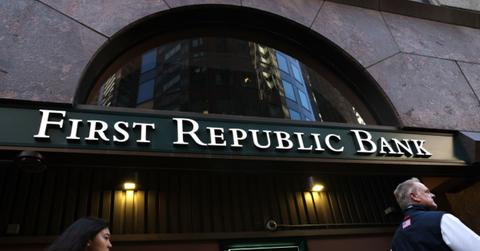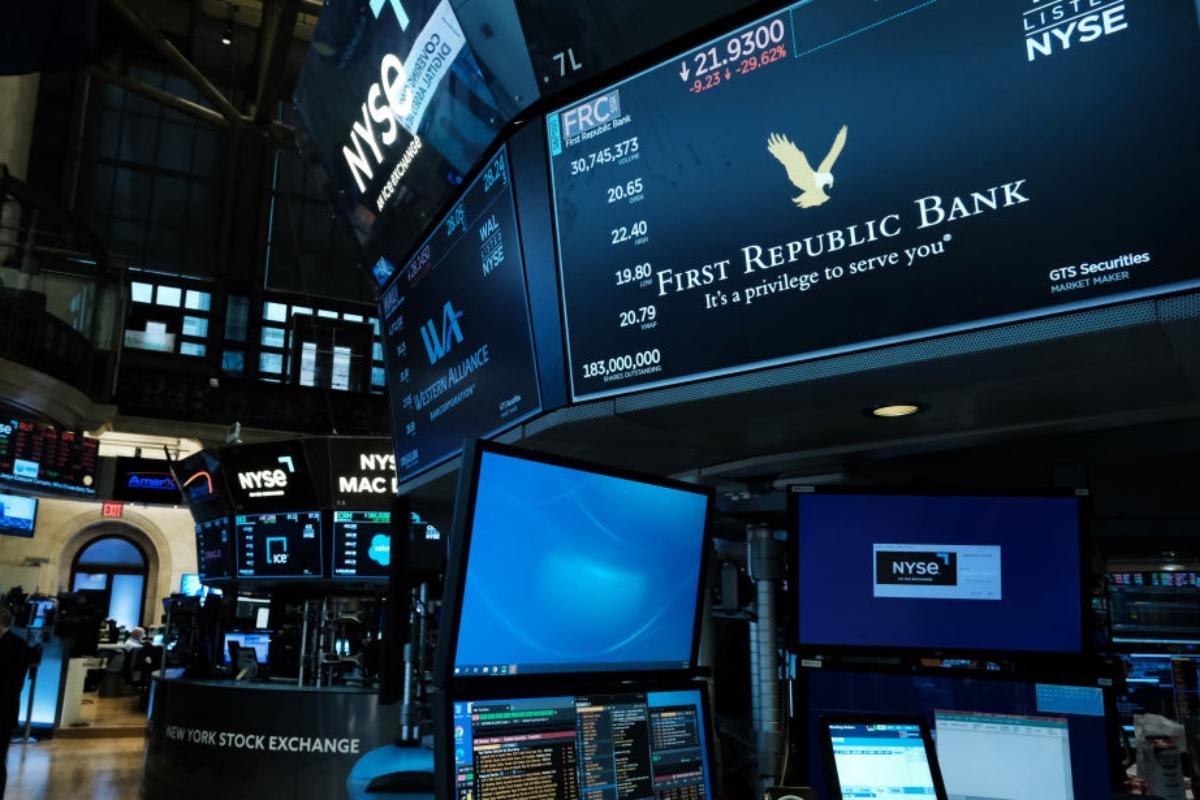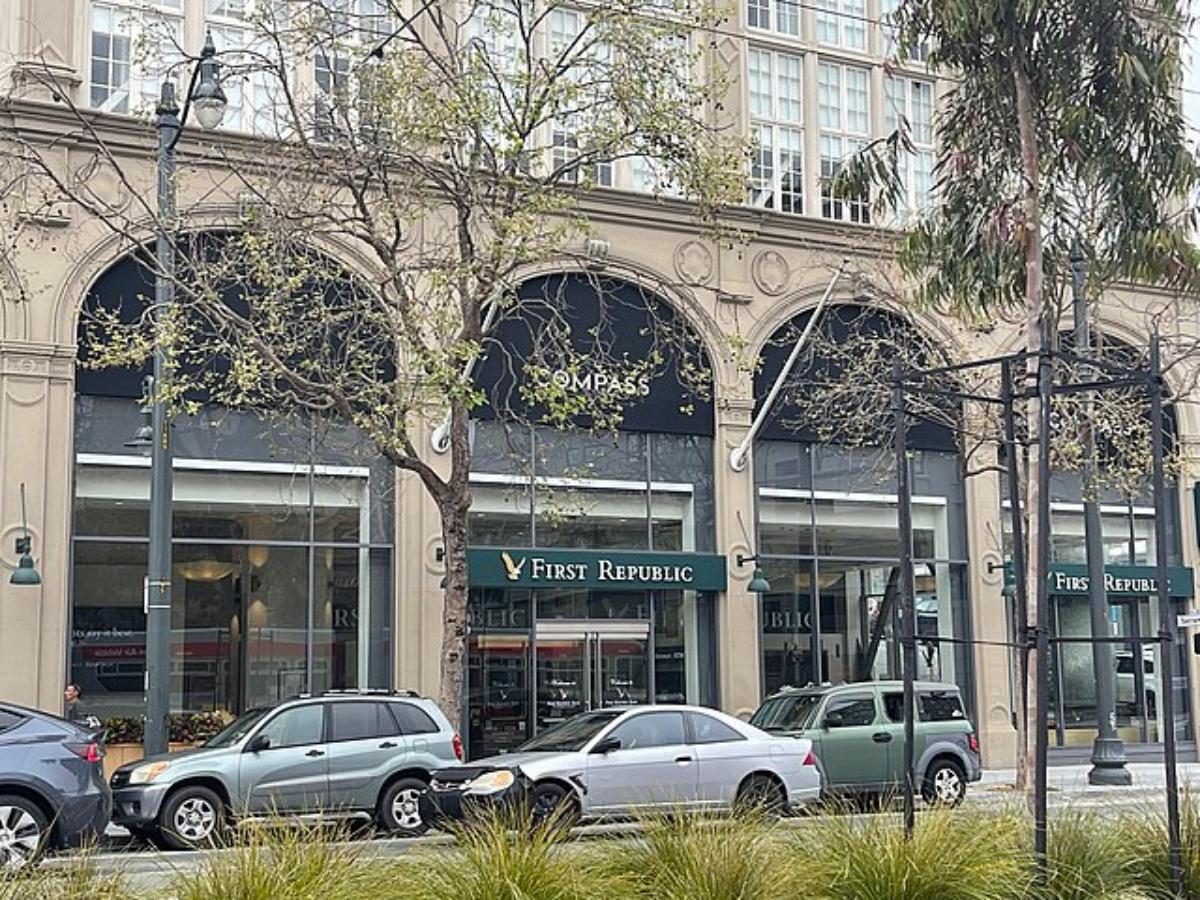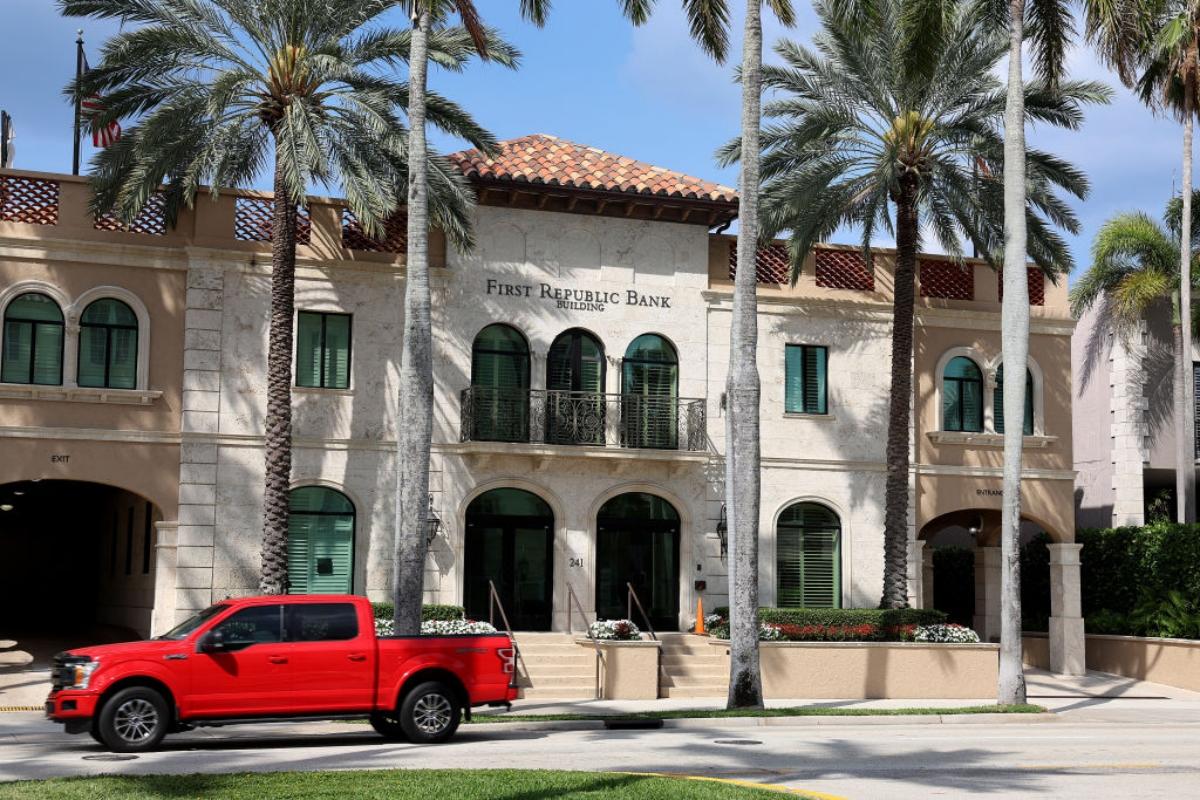First Republic Bank Takeover Details — Who's Buying the Failed Bank?
What happened to First Republic Bank? Like Silicon Valley Bank and Signature Bank, a different banking corporation has taken over. Let's get into it.
May 1 2023, Published 11:57 a.m. ET

The spring of 2023 has been marked by turmoil in the banking industry, most notably with the collapse of Silicon Valley Bank in March. Signature Bank's fall came just days later, and now at the beginning of May, a similar chain of events is happening. What happened to First Republic Bank, and why is JPMorgan Chase involved?
After Silicon Valley Bank was taken over by the Federal Deposit Insurance Corporation (FDIC), another bank, North Carolina-based First Citizens Bank, purchased SVB's remaining assets. Here's a look at the similarities between that event and what happened to First Republic Bank.

Shares of First Republic Bank fell in March 2023 and again sharply in April.
What happened to First Republic Bank?
The failure of First Republic Bank goes back to earlier in the spring, when SVB and Signature Bank were both taken over by the FDIC and sold. That government intervention protected depositors at those institutions, but not investors or shareholders. Fears of more customers ceasing to make deposits at banks rose, but First Republic is the only bank so far where that has proven true.
According to NPR, deposits overall have stabilized. Jared Shaw, an analyst at Wells Fargo Securities, told the outlet, "That fear, that mass exodus that people were concerned about just didn't happen." He noted that banks did a "great job" of contacting customers to reassure them and explain how they invest customer deposits.
Shares of First Republic took a dive last week upon the announcement by the bank that it had lost $100 billion worth of deposits between January and March of this year. As NPR noted, shares were down 97 percent year-to-date on Friday, April 28, at just $3.51 per share.

Where was First Republic Bank located?
First Republic Bank is based in California and has branches in eight states. It was founded in 1985 and specialized in home mortgages and commercial loans, mainly to higher net worth clients.
Why did First Republic Bank collapse?
Despite 11 of the country's largest banks, including JPMorgan, depositing $30 million into First Republic to help it survive, customers apparently weren't convinced of the bank's ability to bounce back. First Republic Bank also attempted a sale on its own but was forced to let federal regulators take over.
The FDIC reportedly asked several major banks to intervene by considering a bid on the failed bank's assets. In a press release on May 1, 2023, JPMorgan Chase announced its acquisition of most of First Republic's assets as well as liabilities. The press release noted that JPMorgan is assuming all of the bank's deposits, even uninsured deposits.

Who bought First Republic Bank?
JPMorgan Chase is purchasing the assets and liabilities from the FDIC for the failed bank. JPMorgan Chase's Chairman and CEO Jamie Dimon said, "Our government invited us and others to step up, and we did.”
“This acquisition modestly benefits our company overall, it is accretive to shareholders, it helps further advance our wealth strategy, and it is complementary to our existing franchise,” he added.
Here's what JPMorgan's purchase of First Republic Bank means:
- JPMorgan takes over most of its assets including $173 billion of loans and $30 billion in securities
- JPMorgan takes on $92 billion in deposits including $30 billion of large bank deposits
- FDIC provides loss share agreements for acquired single-family mortgage and commercial loans
- FDIC provides $50 billion of five-year, fixed-rate term financing
- First Republic's corporate debt and preferred stock are not included in the acquisition
Branches of First Republic are to open as usual on May 1. According to NPR, UBS analyst Erika Najarian believes JPMorgan Chase's acquisition of First Republic will bring stability to the banking industry by helping "lay to rest outstanding investor concerns on liquidity."
